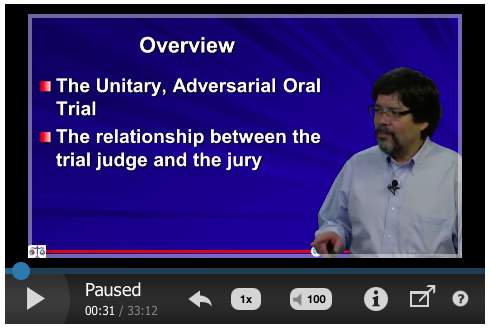Evidence: Law 6330 (4 Credits)
LAW 6330
—Sections RMAL & CMAL
—Class Number 32186 (In Person), 24966 (Online)
Professor Pedro A. Malavet
Spring 2022
Monday, Tuesday & Wednesday
5:30 to 6:45 p.m.
LCOL HH-382 for Class No. 32186
ZOOM for Class No.
24966
Course Description
A general course on the Federal Rules of Evidence and related common law rules, as well as constitutional provisions applicable in this field, with special emphasis on recent Supreme Court rulings on the Sixth Amendment Confrontation Clause and its effect on the admissibility of hearsay. Four (4) Credits.
Latest News Spring 2022: First Reading Assignments & Class Materials
- The basic materials for the course such as assignment sheets and the course syllabus will be posted on my new webpage: http://plaza.ufl.edu/malavet
- The assignments for the class sessions for our first weeks of the Spring 2022 are posted below.
- Future assignments will be posted in the Assignments and Notes Page of the course webpage and another on the course canvas page that will be published before classes start.
- The calendar and lesson plans for the semester will be posted and updated regularly on this page. Only assignments with dates between Tuesday, January 18, 2022, and Monday, April 25, 2022, will reflect updated information.
- The required class materials are: (1) Christopher B. Mueller, Laird C. Kirkpatrick and Liesa L. Richter, EVIDENCE UNDER THE RULES (9th. ed., Aspen Law & Business 2019; ISBN: 978-1-4548-9968-6); (2) Mueller, Kirkpatrick & Richter, 2021: Federal Rules of Evidence: With Advisory Committee Notes and Legislative History (Aspen Law & Business 2021; ISBN: 978-1-5438-4467-2).
- DO NOT PURCHASE A USED SUPPLEMENT: The Rules Supplement is the 2021 edition, newly-issued in the summer of 2021. You are allowed to annotate the supplement with your own outline and no other supplement will be allowed in the examination room. You must purchase a print version of the supplement if you want to use it in the exam. Electronic copies will not be allowed.
- Open-Rules: If the College of Law again opts for online-only examinations, the exam will be open book. However, if we are able to have in-room exams, we will follow the Open-Rules system. “Open-Rules” means that you may have with you during the examination your required 2021 Mueller, Kirkpatrick & Richter, Federal Rules of Evidence supplement. No substitutions will be allowed. Your supplements may be annotated with handwritten notes, but shall not have any attachments other than tabs to mark the location of specific material (the tabs may have on them numbers and the short titles of the referenced material and nothing more). Only handwriting may cover the blank spaces and the original printing on the supplements. The use of stick-on labels or paper, white-out or any other method to eliminate any of the original printing is prohibited. Other than the addition of handwritten notes and tabs, the supplements shall be in their original condition, no material may be added nor may any material be removed in any way. The supplements must be in their original bound form at the start of and throughout the examination. Violations of the University Student Code of Conduct, the College of Law Honor Code or of the exam rules should be reported to me before or during the examination. Violation of these rules shall result in a failing grade and in my referring the matter to the pertinent university or college authorities.
Online-Only Exam Will be Open Book
If the college opts once again to have online-only exams at the end of the Spring 2022 term, I will use Examplify as the electronic platform for the exam and it will be open book. Examplify WILL lock you out of your computer, but you are allowed to use any materials available to you except the assistance of another person. The exam will still be time-limited and there will be a character limit for essay question(s).
Week One: January 18-19, 2022
- PRIOR To the Start of Classes
- Please visit the course Canvas page (which will be published prior to the start of classes) and complete:
- The Syllabus Quiz
- The Preferred Prefix (Ms/Mr/Mrs/Other) Survey
- Please visit the course Canvas page (which will be published prior to the start of classes) and complete:
- Chapter: 1.0 Evidence Law and the System
- Tuesday, January 18, 2022
- Class Participation Sign Up (1) opens
- Session 1
- Class rules, testing, grading and administrative matters.
- See the Syllabus.
- [Click here for my list of "Recommended Readings"]
- Session 1 continued
- 1.1 Introduction:
Why Evidence & The Trial, 1-19
- An introduction to the American Oral Jury Trial
- Pay special attention to What is the Record?, 13-19
- 1.2 Making the Record & Admitting Evidence, 20-31
- 1.3 How Evidence is Excluded, 31-43
- Consequences of Evidential Error, 43-50
- Obtaining Review of Evidence Points, 50-51
- 1.1 Introduction:
Why Evidence & The Trial, 1-19
- Session 1
- Chapter: 2.0 Relevance
- Wednesday, January 19, 2022
- Session 2
- 2.1 Defining
Relevance Under the Rules, 53-56, 56-60 (case lecture), 60-61 (Notes), 62-70 I will lecture on Old Chief at page 56, and Problem 2-A. Too Much Wax on the Floor, at page 66, as to how they illustrated the liberality of the Relevance Standard.
- Problem 2-B: Was he going too fast? (p. 67);
- Problem 2-C: Boys on the Bridge (p. 68).
- FRE 401 (Annotated)
- Session 2 Continued
- 2.2 Excluding or Limiting Relevant Evidence: Pragmatic Relevance, 69-79, 79-82
- Problem: 2-D: Flight and Guilt (p. 69).
- Case: State v. Chapple (p. 71)
- Please be advised that I will show real crime-scene and autopsy photos to illustrate the issues in State v. Chapple.
- This material is quite disturbing and anyone who does not wish to see the images is certainly welcome to look away and even leave the classroom while they are being shown.
- I will again lecture on Old Chief II, pp. 74-79, to discuss what it stands for under FRE 403.
- 2.2 Excluding or Limiting Relevant Evidence: Pragmatic Relevance, 69-79, 79-82
- Chapter: 2.0 Relevance continued, TBA
- Review: Standard FRE 403 Balancing & Reverse 403 & Automatic Admissibility Preview
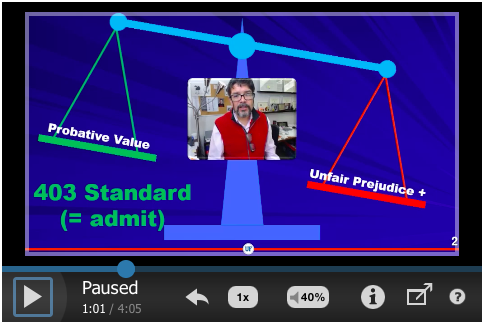
Week Two: January 24-26, 2022
Starting with Monday, January 24, 2022, assignments will be posted in the Assignments and Notes Page of the course webpage and in the course canvas page.
FALL 2021 Practical Project is Here
The Practical Project problem is now available [here] and will be in the course canvas page as well. It accounts for 10% of your testing score and will be greaded on a Pass/Fail basis. The motions must be uploaded on CANVAS on or before 5:00 p.m. on Friday, 12 November 2021.
Spring 2021: Have a Great Summer, Exam Review
I wish you all a great summer and hope to see those of you who have not yet graduated in the Fall.
As I tried to say in the exam, exam review will take place in the FALL of 2021 (sorry I incorrectly wrote spring). I will gladly allow students to review their marked up exam by posting it through a secure assignment on the course canvas page. Just send me an email asking me to post it for you any time after the start of classes in August of 2021. Because the beginning of a new term is always a very busy time, I will start posting the marked up exams on the Canvas page during the second week of classes in the Fall semester, that is, after Monday, August 30, 2021.
I will schedule discussion meetings after I post the Exam Feedback memorandum here and on the course Canvas page on Thursday, September 23, 2021.
Practical Project Spring 2021
The Motion in Limine Practical Project for this term is now available [HERE]. It will be due two weeks from today, on Thursday, 1 April 2021. You will upload your PDF or MS Word attachments to the assignment in the CANVAS page.
Power Point PDFs
- I will post PDF files with the Power Point slides that I use in class in the eLEARNING/CANVAS course page. Click the eLearning link on the banner at the top of this page to login and download the files. The files are in the “Files” section of the course page.
- I save the PPs in Outline format to make them more manageable, but I append any graphics or charts at the end.
“The Forest”
My general outline to deconstruct evidence problems in class —and in the exam.
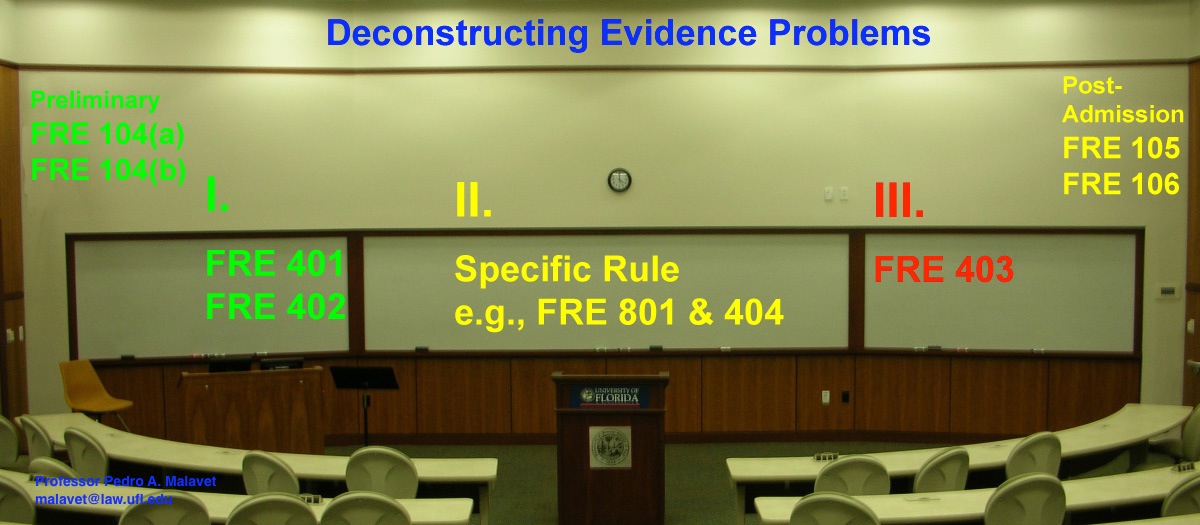
- From your left to your right, you start with the Preliminary Question:
regular (FRE 104(a)) vs. conditional admissibility (FRE 104(b)). - You then move on to Part I:
basic relevance question under FRE 401, which makes the evidence potentially admissible under FRE 402. - Then you move on to Part II:
Is there a more specific admissibility or exclusion rule (e.g., FRE 801, FRE 404). - If you get past that, then you reach Part III:
the FRE 403 balance (unless the rule in part II expressly states otherwise). - After Admission:
If you admit, you also might still have to consider possible Limiting Instructions under FRE 105 or completeness admissibility under FRE 106, just to name two post admission rules.
Put Another Way
- THE
FOREST
IN THE FIELD OF EVIDENCE
---> Preliminarily:
Who Decides?
Judge (FRE 104(a)) or Jury (FRE 104(b)) -
I.
Is the evidence relevant?
[FRE 401] [FRE 402] - II. More specific questions regarding admissibility
e.g. [FRE 404] [FRE 801] [FRE 609] - III. FRE 403
(a) What is the relevant evidence's probative value? [FRE 403]
(b) Is the probative value substantially outweighed by the danger of unfair prejudice (or any of the other five reasons)? [FRE 403] - --->Post-admission:
For what purpose is the evidence admitted?
[FRE 105] This may also affect the 403 balance. (In other words, the limiting instruction may affect the balance.) - [FRE 106] The admission of a document may then allow the admission of the rest or parts of it.
Strength of the Evidence
The Summary Judgment or Judgment as Matter Law Standard
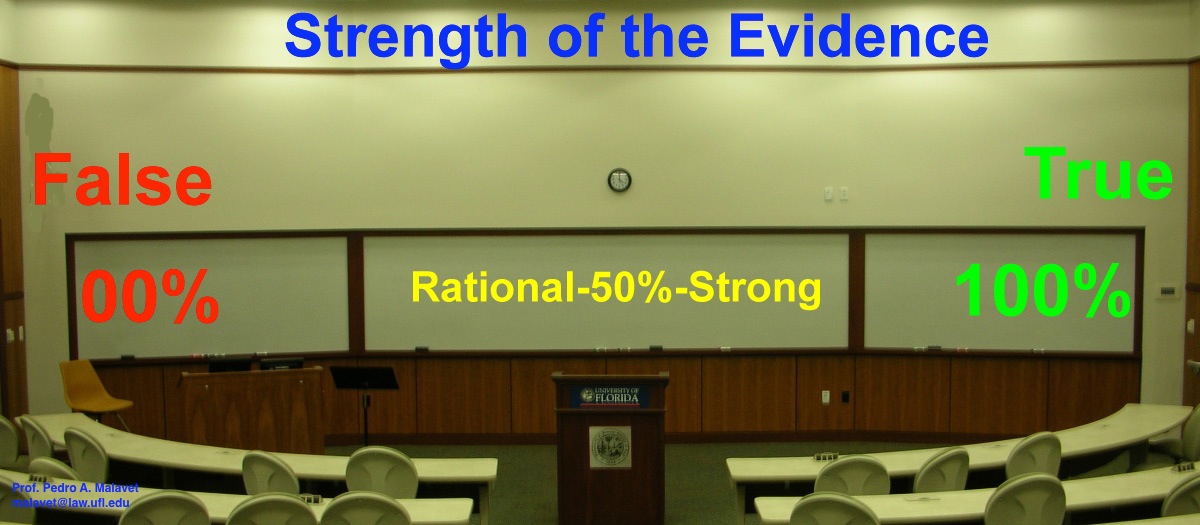
- Note that the extreme left (from your perspective, looking towards the board) always represents 0%, meaning that no evidence at all exists to support the pertinent fact.
- The start of the blackboard represents the start of the level of proof at which “Reasonable Minds” can find the fact to exist or not, and the strength of the evidence increases as you move from left to right, reaching the 50% mark in the middle of the two blackboards, and reaching preponderance at the start of the second blackboard.
- The evidence becomes increasingly strong as you move along this continuum towards the mythical 100% or absolute truth of the fact alleged, which is represented by the extreme right corner of the classroom.
Exams
- Fall 2011
- Fall 2012
- Fall 2013
- Spring 2014
- Fall 2014
- Fall 2015
- Fall 2016
- Fall 2017
- Fall 2018
- Fall 2019
- Fall 2020
- Spring 2021
Examination Feedback Memoranda
- Fall 2011
- Fall 2012
- Fall 2013
- Spring 2014
- Fall 2014
- Fall 2015
- Fall 2016
- Fall 2017
- Fall 2018
- Fall 2019
- Fall 2020
- Spring 2021
Practical Projects
- Fall 2010
- Fall 2011
- Fall 2012
- Fall 2013
- Spring 2014
- Fall 2014
- Fall 2015
- Fall 2016
- Fall 2017
- Fall 2018
- Fall 2019
- Fall 2020
- Spring 2021
- Fall 2021
Other Resources
- 11th Circuit’s website: download Pattern Jury Instructions
- Federal Rules Online
- Rozier v. Ford (A Good Evidence Opinion)
- Motion In Limine Resources
- DC Public Defender Service Resources Page
- Includes English/Spanish legal dictionary and the Practice Manual
Mistaken ID and Innocence
A cautionary tale about mistaken eyewitness identification and an innocent person going to jail:
WARNING: Strong language about sexual assault and wrongful conviction
This is story about a victim of sexual assault who mistakenly identified a man as her attacker at trial and sent an innocent person to prison for 11 years. DNA and the actual attacker’s admission proved the truth, and the wrongly convicted man was released. The victim then sought him out and they both talk about mistaken identification leading to wrongful conviction.
Evidence Videos
These are videos prepared for my Evidence class or from our MOOC on the Legal System of the United States.
Click on the image to launch the video in a new window.
- EVIDENCE VIDEOS
- "Standard" v. "Reverse" FRE 403 Balancing REDUX

- "Standard" v. "Reverse" FRE 403 Balancing
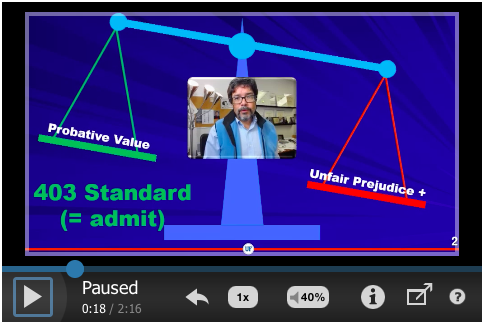
- Impeachment: Intrinsic/Extrinsic Evidence
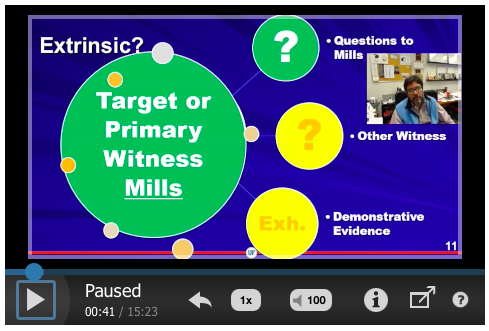
- Impeachment: Character for Truthfulness and Contradiction
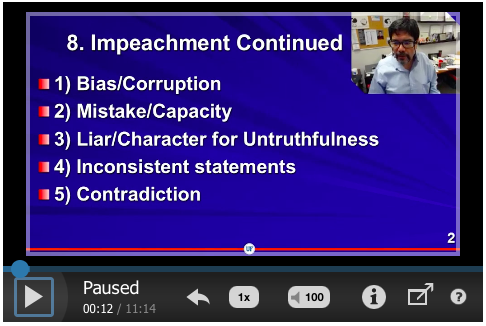
- Defining Hearsay
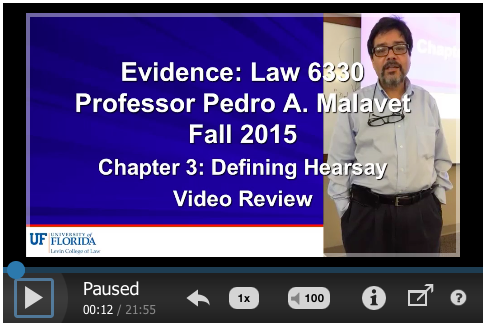
- Admissions (Mahlandt case) & Crawford Preview

- FRE 803(3) Parts A and B
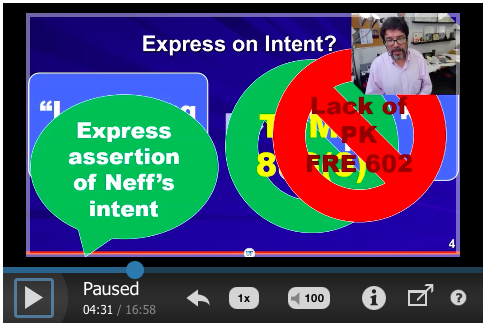
- FROM THE MOOC
- Judges and their Courts in the U.S.
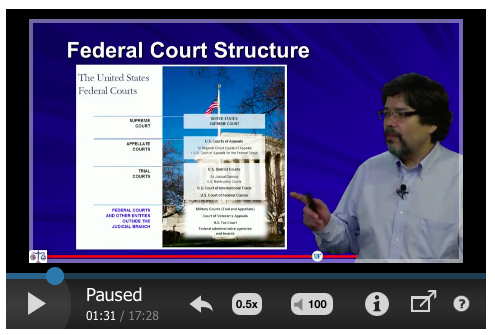
- The American Oral Jury Trial
